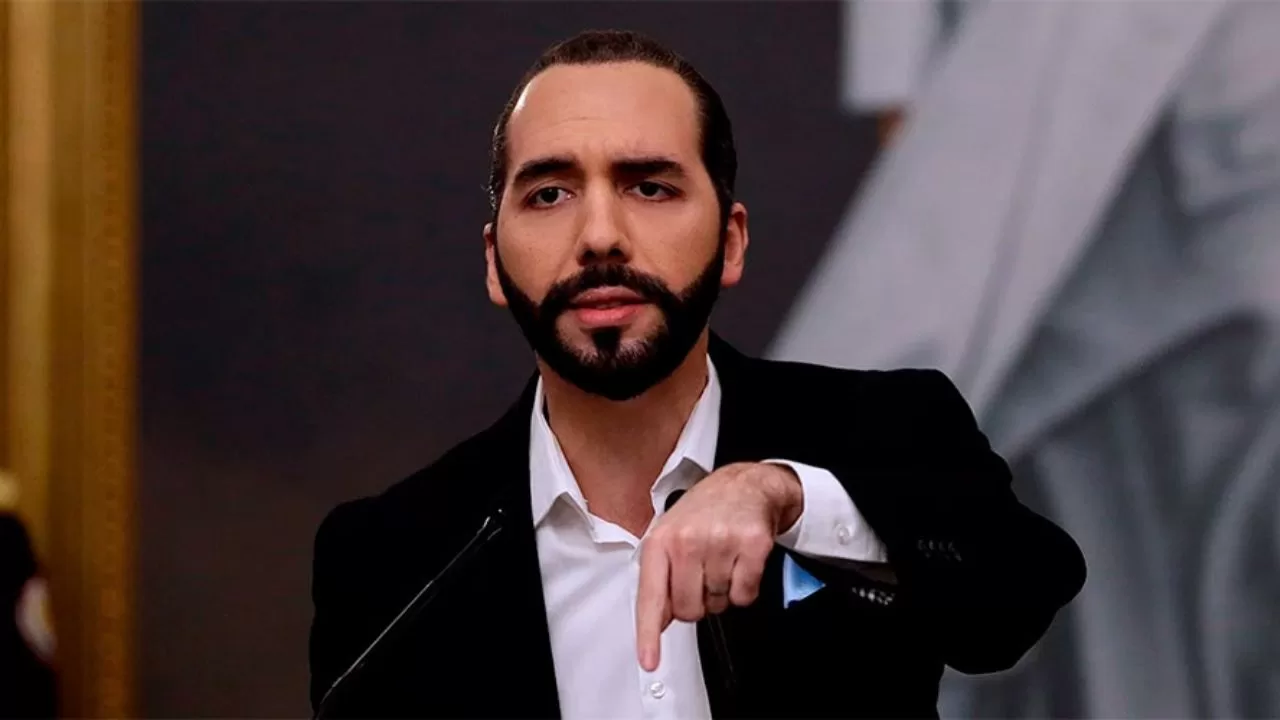In the list of reasons that Italo Calvino used to justify why read the classics, the fourth thesis is very illustrative: “Every rereading of a classic is a reading of discovery like the first.” Immediately afterwards, he affirms that that thesis is a corollary of this other one: “Every reading of a classic is in reality a rereading” (Italo Calvino. Why read the classics?).
The version that the Colon Theater offers these days one of the great titles of the lyrical repertoire, The magic Fluteof Wolfgang Amadeus Mozart, and a quick retrospective tour of some of the most emblematic “rereadings” of which he was the object, reconfirm not only his character as an absolute classic but also the wisdom of the reflection of the great Italian writer.
It may interest you: Mariana Chaud and Tamara Tenenbaum portray sex and love in the days of Tinder
There is consensus among researchers when it comes to characterizing The magic Flute like a fable with a good amount of elements belonging to fantastic or “fairy” tales. That it was so was a deliberate decision of Mozart and his librettist, Emanuel Shikanederboth consubstantiated in conceiving a work destined for a theater in the suburbs of Vienna, frequented by the popular classes of that time.
The story narrates the adventures of the prince I walk here in the Queen of the Night commissions him to rescue his daughter, kidnapped by sarastro. For this, three ladies (or fairies) will deliver, respectively, Tamino and his companion (the nice papageno), a flute and enchanted bells to protect them from adversity. Three children will also be in charge of guiding and protecting the friends throughout the journey.
After dodging the evil Monostats -who also pretends to Pamina-, Tamino and Papageno appear in front of the temple of Sarastro, a character who, unlike what was reported by the Queen of the Night, turns out to be a wise and kind being. Sarastro promises Tamino to give him his beloved if they both overcome three tests together: the one of silence, the one of fire and the one of water. The success in the challenge not only consecrates the union of the young people but also the triumph of the Light (incarnated by Sarastro and his priests) against the Darkness (represented by the Queen of the Night).
:quality(85)/cloudfront-us-east-1.images.arcpublishing.com/infobae/7YZB6IREFFGYBH2UWNFUUR7E6M.jpg%20420w,https://www.infobae.com/new-resizer/Cq9csyquhuVHQ7lFaBn6zoZxl2E=/768x432/filters:format(webp):quality(85)/cloudfront-us-east-1.images.arcpublishing.com/infobae/7YZB6IREFFGYBH2UWNFUUR7E6M.jpg%20768w,https://www.infobae.com/new-resizer/z65C9Iw6WlnuELutFYL5m2dxTCE=/992x558/filters:format(webp):quality(85)/cloudfront-us-east-1.images.arcpublishing.com/infobae/7YZB6IREFFGYBH2UWNFUUR7E6M.jpg%20992w,https://www.infobae.com/new-resizer/aji1RlSHB_W2x1zJCkoFFEi2i8A=/1200x675/filters:format(webp):quality(85)/cloudfront-us-east-1.images.arcpublishing.com/infobae/7YZB6IREFFGYBH2UWNFUUR7E6M.jpg%201200w,https://www.infobae.com/new-resizer/OGnoakdTIrFBr4ml3arreN-qvRk=/1440x810/filters:format(webp):quality(85)/cloudfront-us-east-1.images.arcpublishing.com/infobae/7YZB6IREFFGYBH2UWNFUUR7E6M.jpg%201440w)
Like all popular fables, the scriptwriter and musician wanted the work to have a simple structure, to give an explicit account of Good and Evil, that each of its characters embody very varied and contrasting personalities and, above all, a “happy ending” that exhibits explicitly a universal message or moral. This set of elements magnificently resolved in the text of Schikaneder and the sublime music of Mozartmade the work a success from the very night of its premiere in 1791, and that to this day continues to reap the taste and fascination of all audiences.
He rightly stated calvin in its Thesis No. 3: “The classics are books that have a particular influence, either when they are imposed as unforgettable, or when they hide in the folds of memory, blending in with the collective or individual unconscious.”
:quality(85)/cloudfront-us-east-1.images.arcpublishing.com/infobae/4CXS2VO7GZDNTH734AX4OWI5HU.jpg%20420w,https://www.infobae.com/new-resizer/zx8rT-bYRR4e7pQoNqq32Xoy3tA=/768x432/filters:format(webp):quality(85)/cloudfront-us-east-1.images.arcpublishing.com/infobae/4CXS2VO7GZDNTH734AX4OWI5HU.jpg%20768w,https://www.infobae.com/new-resizer/GYIpQpuRkJeIXL-CWxjc2osnwXY=/992x558/filters:format(webp):quality(85)/cloudfront-us-east-1.images.arcpublishing.com/infobae/4CXS2VO7GZDNTH734AX4OWI5HU.jpg%20992w,https://www.infobae.com/new-resizer/G8Je2jJC-oZQ6k6ZEWkmclNvxJs=/1200x675/filters:format(webp):quality(85)/cloudfront-us-east-1.images.arcpublishing.com/infobae/4CXS2VO7GZDNTH734AX4OWI5HU.jpg%201200w,https://www.infobae.com/new-resizer/ZOnCZSzkVYV_XHzQXlF-Neltomc=/1440x810/filters:format(webp):quality(85)/cloudfront-us-east-1.images.arcpublishing.com/infobae/4CXS2VO7GZDNTH734AX4OWI5HU.jpg%201440w)
One of the most firmly established “readings” around this opera has been the one that affirms that it is a true “catalog” of allusions to Freemasonry, a group to which, it is known, Mozart joined in the final stretch of his life. Thus, the appeal sarastro to the Egyptian gods Isis and Osiris, the metaphors around the dichotomy between light and darkness and the permanent presence of the number 3, key in Freemasonry (three are the chords with which the overture begins, three are the ladies , three are the children, three are the priests, three are the tests…), served to reinforce this approximation. Some even went further and exaggeratedly linked the opera to a possible commitment by Mozart to the revolutionary ideas that had hatched a few years before in 1789.
While of course the fundamental intention of Mozart It was not to reveal the rituals and principles of his Masonic “brothers”, this “reading” was always attractive and quickly became established over time based on meticulous research and staging in which this aspect was particularly emphasized. In short, and as occurs with all classics, some of his “readings” managed to consolidate more than others over time.
Thesis No. 7, of calvin comes down to it here: “The classics are those books that come to us bearing the imprint of the readings that have preceded ours, and behind them the imprint they have left on the culture or cultures they have traversed (or more simply, in language or customs)”.
:quality(85)/cloudfront-us-east-1.images.arcpublishing.com/infobae/GG26KQPYIRH5HHZ6BXPRZSAVYY.jpg%20420w,https://www.infobae.com/new-resizer/lUNwDG119Nh8vWTQPez7pOJICBA=/768x432/filters:format(webp):quality(85)/cloudfront-us-east-1.images.arcpublishing.com/infobae/GG26KQPYIRH5HHZ6BXPRZSAVYY.jpg%20768w,https://www.infobae.com/new-resizer/F89ZC4aafbNgUxJs7LqUA0cjLbY=/992x558/filters:format(webp):quality(85)/cloudfront-us-east-1.images.arcpublishing.com/infobae/GG26KQPYIRH5HHZ6BXPRZSAVYY.jpg%20992w,https://www.infobae.com/new-resizer/yXiM7MoNsqI-MN3ORiVyVt-w6iA=/1200x675/filters:format(webp):quality(85)/cloudfront-us-east-1.images.arcpublishing.com/infobae/GG26KQPYIRH5HHZ6BXPRZSAVYY.jpg%201200w,https://www.infobae.com/new-resizer/qNs9iOQNTw8_gT7L7qu2UUO6lR0=/1440x810/filters:format(webp):quality(85)/cloudfront-us-east-1.images.arcpublishing.com/infobae/GG26KQPYIRH5HHZ6BXPRZSAVYY.jpg%201440w)
Given its characteristics, the last opera of Mozart It was attractive for its transposition to the cinema. Without a doubt, the most original and famous is that of the Swedish director igmar bergmanwho took it to the cinema -and not by chance- in 1975, turning the film, in turn, into a cinematography classic himself.
Along with some aspects that the genius of bergmann recovers for his version -like the theater of machinery typical of the 17th and 18th centuries-, his psychoanalytic “reading” is undeniable. In Bergman’s thesis, Queen of the night and sarastro they would appear as two divorced parents who dispute the love (and possession) of their daughter, a conflict that finally imposes on Pamina the need to resolve her ambivalence, anguish and natural insecurity (that is, building her autonomy in the face of her parents’ mandate), assuming the decision to go through the tests hand in hand with their chosen “prince”.
bergmann would match calvin in the first argument regarding the classics as those “… books of which one usually hears people say: «I am rereading…» and never «I am reading…».
:quality(85)/cloudfront-us-east-1.images.arcpublishing.com/infobae/XLB74MTWGVGIBCG3ZG75PRMLLE.jpg%20992w)
In 2006, the actor and film and theater director Kenneth Branagh premiered a new film version of the work by Mozart. Set with great visual displays in times of the First World War, the English filmmaker, in addition to passing the texts from German to English and altering various parts of the plot, in general lines maintained the essence and spirit of the creation, although this time adapting the moral towards the possibility of postulating the love between Tamino and Pamina as a message of peace and fraternity among nations.
For the purists who today -like those of the film’s premiere- continue to react with the same anger in the face of those alterations, they will find it a reassuring alternative to take refuge in Thesis No. 8 of Calvino’s essay: “A classic is a work that arouses incessant dust of critical discourses, but that the work is constantly shaken off”.
:quality(85)/cloudfront-us-east-1.images.arcpublishing.com/infobae/XAMZKOU4HJHMXF3ZGTZBQLZFLQ.jpg%20420w,https://www.infobae.com/new-resizer/nbTnrqx3fgpcrbeH84ghDL_wfOA=/768x432/filters:format(webp):quality(85)/cloudfront-us-east-1.images.arcpublishing.com/infobae/XAMZKOU4HJHMXF3ZGTZBQLZFLQ.jpg%20768w,https://www.infobae.com/new-resizer/T4Ji2VJa-Imf-4J0qNJ-LaBaD7A=/992x558/filters:format(webp):quality(85)/cloudfront-us-east-1.images.arcpublishing.com/infobae/XAMZKOU4HJHMXF3ZGTZBQLZFLQ.jpg%20992w,https://www.infobae.com/new-resizer/4mnjb5s9AVwCxY0Q2OytcTst11M=/1200x675/filters:format(webp):quality(85)/cloudfront-us-east-1.images.arcpublishing.com/infobae/XAMZKOU4HJHMXF3ZGTZBQLZFLQ.jpg%201200w,https://www.infobae.com/new-resizer/Bd7CdsNxBZiCEbKFJct8dUC2kNw=/1440x810/filters:format(webp):quality(85)/cloudfront-us-east-1.images.arcpublishing.com/infobae/XAMZKOU4HJHMXF3ZGTZBQLZFLQ.jpg%201440w)
In case there were no doubts about the infinite interpretive possibilities that a classic can enable, this Flute of the 2023 Season came to us, a waste of coherent originality. With undeniable imitations of the times of silent cinema (buster keaton through) and registering in a “cultural climate” prone to animated films and comics by Paul Barrittthis version of the duo Kosky/Andrade He also messes with the dialogues and with specific alterations. The proposal is correct, however, by maintaining the central pillars of the opera.
On the one hand, it exposes the foundational solidity of the fable and, on the other, much more decisive and difficult due to the “spectacular” times that assist us, the original balance that they conceived Schikaneder and Mozart between scene and music. In a true musical care operation, the alliance of a solvent conductor like Marcelo Ayub With the alternation of two impeccable casts, they always kept in mind -and the public endorsed it in each performance- that this work is not only a classic. It is one of the great music classics of all time.
After this journey through some “readings” of The magic Flute and in light of the innovative version that can be enjoyed these days at the Colón, calvin not only enlightens us once but also opens expectations for a future replenishment of The magic Flute since, as Thesis No. 6 of his also classic book says, “A classic is a book that never ends saying what it has to say.”
* Sociologist (UBA) specialized in cultural issues. Doctoral student in Human Sciences (UNSAM).
Keep reading


